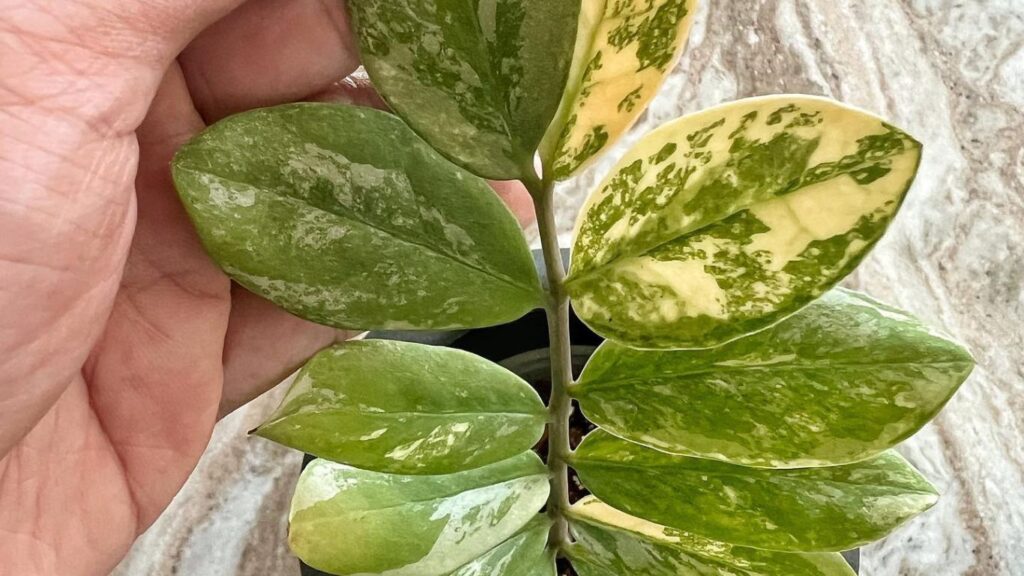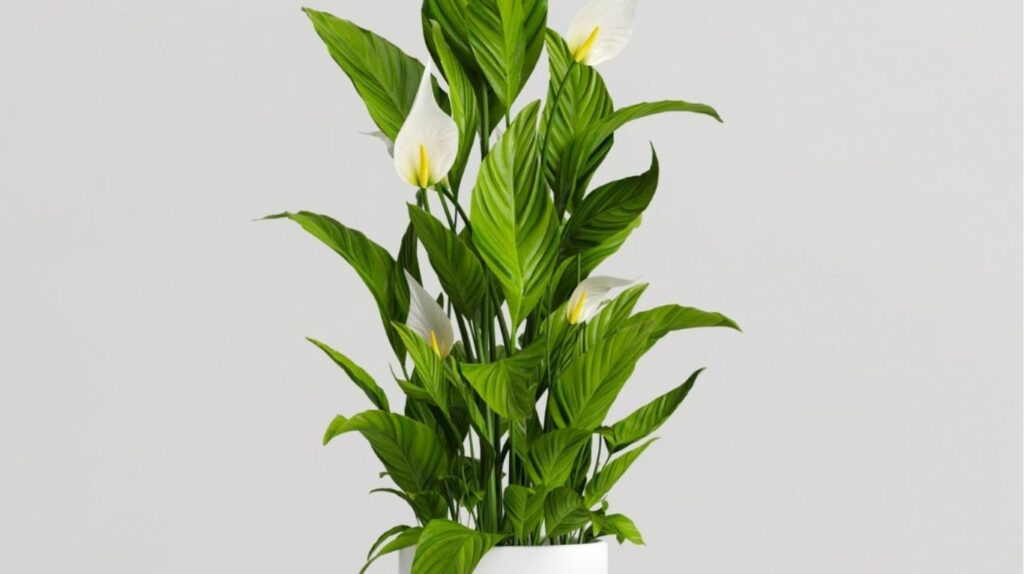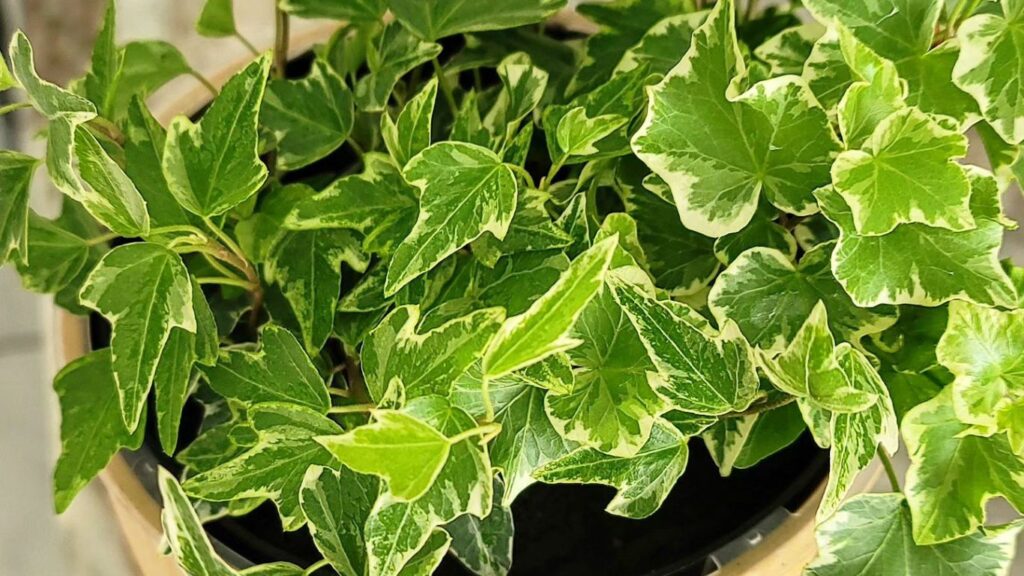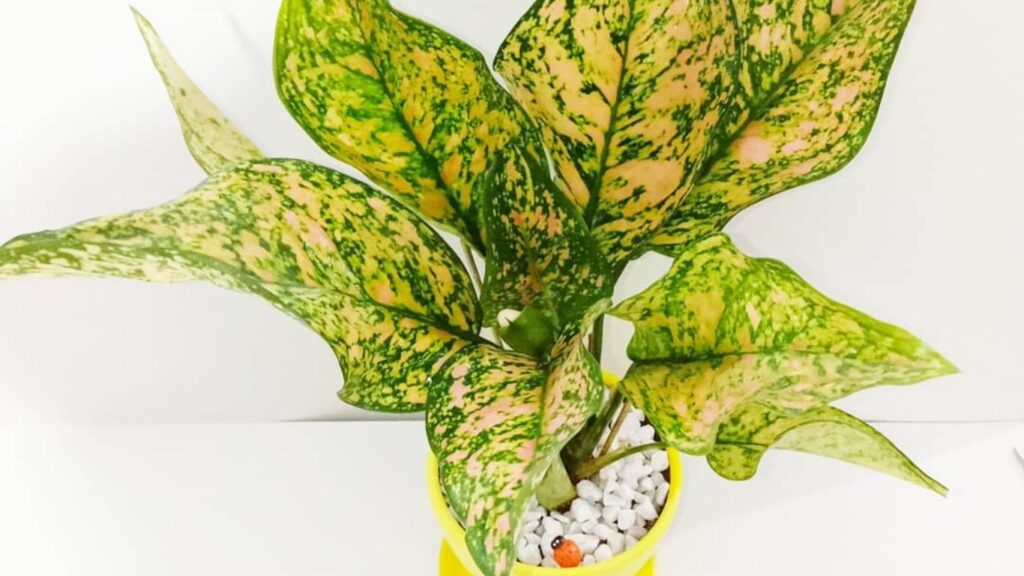It’s great to let the sun shine once in a while, but some parts of our home may not have the chance to welcome the sun’s rays.
How long can plants go without light for most of us can remedy a lack of natural light with lamps and other lighting, but many houseplants need direct sunlight to survive.
An easy solution is to decorate your sun-deprived rooms with plants that don’t need sun. If your home lacks natural light, you can get these plants.
Here is a detailed discussion about how it works. Plants can do a lot of things for our homes.
Low light houseplants are great for spots in a room that need a touch of greenery, but most plants may not get enough direct sunlight to survive.
A few well-placed pots will add a natural appeal to your decor, making the space feel more alive and inviting.
Plants will naturally purify the air by photosynthesis, although they are not as efficient as the best air purifiers.
All of the plants below can thrive in indirect light and most of them thrive in artificial light.
But, research shows that plants can improve our mood and reduce anxiety, which is a definite benefit. Then there’s pest control to consider.
The problem is, in low-light conditions, plants may have a hard time surviving.
This means that it is often difficult to keep plants in rooms that do not have windows, such as bathrooms and offices.
There are exceptions though. Some plants not only cannot survive, but thrive in the shade.
That means you will can benefit from all of the above regardless. If you are interested in learning more, here are few plants that can live without sunlight.
Some of the following plants are poisonous to pets – check Before you bring one home see if they are poisonous to pets.
Cast Iron Plant

Cast iron plant is commonly referred to as iron plant because of its hard nature.
It can survive in a variety of conditions making it a top choice for black thumbs and busy plant owners.
Its rich green leaves are perfect for accenting any corner of the house that needs a natural touch.
Cast iron is a low light plant that can live almost anywhere in your home. They grow slowly, but are really difficult to kill.
The only requirement is to keep them out of direct sunlight to prevent scorching or browning of their leaves.
It has a very low-maintenance nature character, In fact, these plants are known to thrive under most conditions, and are often damaged by excessive care and handling, for example overwatering.
They appreciate shaded spots instead of low light levels. Water it regularly, keeping the soil moist, but not soaking wet.
If you want to give your cast iron plant some extra care, wipe its leaves with a damp cloth once a week to keep dust off.
Clean leaves allow it to more easily sun and absorb all of its nutrients. This plant comes in a variety of varieties and looks great as a shelf, tabletop and floor decoration.
With its thick and vivid leaves, it can really add some decor to a dim space.
Spider Plant

Spider plant has long and skinny leaves that grow from the roots. Its leaves are like spider legs.
Spider plant is also sometimes referred to as spider ivy and ribbon plant. it is another great option for dark, low light areas.
They prefer bright, indirect sunlight and can thrive without a lot of natural light.
These plants are quite tolerant, whatever the light conditions, the spider plant will thrive.
These plants can thrive in areas with a mixture of fluorescent and natural lighting.
Properly cared for sprouted spiderettes or baby spider plants these plants can produce small white flowers that can be reproduced to grow more spider plants.
Spider plants can sometimes have brown leaves. It is caused by exposure to fluoride in water.
Watering with distilled or rainwater can help prevent browning and keep your plant nice and green.
In terms of care, they should be pruned back when necessary using some good pruning shears and watered regularly about once a week.
It’s a fairly hardy plant. Whether hanging from a basket or lined up on a shelf, spider plants look great on display, and with two tone colors in the leaves, they look even more attractive.
Plus, it’s non-toxic to cats and dogs if you have animals at home.
ZZ Plants

The ZZ plant is one of the toughest plants around and almost impossible to kill.
Its lush foliage and hardy nature make it one of the best plants for someone in desperate need of greenery.
It also has waxy leaves that give it a beautiful shine. This is a great plant if you want to decorate an empty space in your home or need another friend to add to your house plant collection.
it’s grow best in bright, indirect light, but can also survive in very low light.
It can tolerate areas with no natural light and a minimum amount of fluorescent light.
It doesn’t like direct light and will start to yellow, curl the leaves if it gets too much light.
they will cope with most conditions, except that bright, direct sunlight can cause some damage to the waxy leaves.
Don’t worry if you forget to water your plants daily. The ZZ plant is hardy enough to go long between waterings, and does well with an intermittent routine.
In short, if you want a near-indestructible plant that can survive in any conditions, this is the one to get.
Be warned that this plant is known to be toxic to pets and humans. It is toxic if ingested.
Lucky Bamboo

For something especially decorative, lucky bamboo is another option. It looks like a smaller version of the traditional bamboo, but is actually a type of water lily known as Dracaena sanderiana.
Don’t let that fool you, though, it’s still pretty solid. It will generally grow in low light and can be planted in soil or directly in water.
It is believed to bring good luck to its owner and has a very sweet appearance.
However, this is a fast-growing plant, so you may need to trim the leaves when necessary.
It also likes a warmer climate (60°F+) and needs to be changed every few weeks if sitting in direct water.
This plant is also known to be poisonous to pets, so avoid it if your family members have fur.
Peace Lily

Contrary to popular belief, peace lilies are not true lilies at all. The white “petal” is actually a leaf bract that grows around a yellow flower.
Next time you look at it closely! Standard peace lilies can grow from 24 to 40 inches, so they are mostly used as floor decorations.
They require very little maintenance and still have a distinctive and elegant look, which can really add to your decor.
Peace lilies enjoy low to medium light and can also thrive in fluorescent lighting.
The more light the peace lily receives, the more likely it is to produce white flowers.
They can thrive in low-light areas, but the chances of flowering are much lower.
Peace lily is one of the best plants in the world for air purification.
These names come from its beautiful leaves which some say resemble the beauty of peacock feathers.
If flowers are what you’re after, you’ll want to place it somewhere with bright, indirect light.
In terms of care, a peace lily requires regular water, keeping the soil moist, but not soaking wet.
The soil should be able to drain excess water to prevent root rot, so make sure the pot has drainage holes.
It is good practice to remove the leaves frequently; This not only makes the plant look beautiful, but also helps absorb light.
This is another plant that is poisonous to pets, so if you have cats and dogs, avoid it.
Dracaena

The Dracaena family covers a wide range of plants, including the lucky bamboo, and is an excellent option if you’re looking for a larger plant variety for your shade-prone home.
These can really range in size, from small desktop additions to large tree-like options.
No matter the size, these plants are easy to care for, requiring only low to moderate light conditions to thrive.
Bright, indirect light is preferable, though. Dracaena like moist conditions and will therefore do well in a bathroom or kitchen, but they need less water than your average plant.
It is best to let the top few inches of soil dry out completely between watering sessions.
Foliar mists can also help this plant grow. it’s are among the top air-purifying plants that can filter out toxins in your home.
This is unfortunately another plant that is toxic to pets, so be careful.
English Ivy

English ivy is a beautiful climbing plant that can turn any drab wall into a new work of art.
English Ivy Finally, for something that is both decorative and hardy, English ivy is the answer.
This plant will climb any place given the chance. Ivy is also great on trellises, fences and other areas that allow its vines to grow.
However, keep in mind that vines take years to grow if you grow from seed.
The more light this ivy receives, the more beautiful colors will show through its leaves. However, direct light can kill her.
Bromeliads

Bromeliads look best on shelves, on top of tables or even on the floor, depending on the species.
Most bromeliad species like bright indirect sunlight as opposed to direct lights. Indirect light means the sun is not hitting the plant directly.
An example of direct sunlight is if your plant is in direct sunlight, or if you place your plant next to an open window where the sun shines directly.
Chinese Evergreen

Chinese evergreens are easy to grow and are among the many indoor plants that don’t need sunlight.
Old Chinese evergreens produce flowers that look like calla lilies and look best next to furniture on floors and filling open spaces in the home.
Young Chinese evergreens are compact enough for desk, tabletop, and shelf decorations.
These plants have also made it to NASA’s list of air-filtering houseplants, so Chinese evergreens are both easy to care for and a healthy choice for your home!
Chinese Evergreen’s specific sun requirements depend on its leaf color.
Generally, if you have a plant with dark foliage, your particular plant prefers low light.
Varieties with light colored leaves like pink or orange prefer moderate light.
Like many of the other plants on this list, Chinese evergreens should not be placed in direct sunlight to avoid scorching leaves.
Dumb Cane

Dumb cane is a beautiful plant that usually adorns both home and office spaces. As all parts of the plant are poisonous, they are called dumb cane.
It can cause swelling and other problems if eaten, and its juice can cause itching if it comes in contact with the skin.
If handled properly with minimal contact, the danger of this plant is minimized.
Dumb cane can thrive in low to high filtered light depending on the species.
Filtered light refers to sunlight that shines through something else, such as a sheer curtain or windows.
Most species can survive in low-filtered light, Double check to see what type of light your dumb cane likes.
Maidenhair Fern

Maidenhair ferns are elegant plants that enhance any home, but they are also very easy to kill!
That being said, the beautiful foliage and overall appearance of this plant is more than worth the extra work.
Many fern varieties, such as the Boston fern and the bird’s nest fern, grow well in indirect sunlight.
Maidenhair ferns are easily affected by indirect, bright light and direct sunlight.
They also like high humidity and don’t like dry soil, so they must be moist, but not overly waterlogged to avoid root rot. These plants prefer distilled water to hard water.
Parlor Palm

Parlor palms are attractive plants that are great for your dining room or living room.
In the Victorian era, owning a parlor palm was a sign of a family’s wealth.
Although no longer exclusive in today’s world, the parlor palm still brings a sophisticated feel to any room that occupies it.
Parlor palms can grow in low light, but do best in medium light. They prefer shady areas rather than bright areas, Parlor palms can even thrive in artificial light if needed.
Peacock plants: Peacock plants are very beautiful and known for being particular with their care.
They prefer humid temperatures, distilled or rainwater, and moist soil.
Peacock plants prefer low to medium light and may experience sad foliage with excess direct light.
Pale leaf spots are a sign of too much sun for this plant. it is best to pick a healthy species and avoid small plants with brown leaves.
You’ll have more success growing a healthy peacock tree if you start with a healthy plant.
Over 1000 species of Peperomias are found mainly in South and Central America.
These plants prefer dry soil and can tolerate missing water for a few days due to their thick leaves.
These plants prefer bright, indirect light and can still thrive under fluorescent lights. Peperomias can also thrive in partially shaded areas if necessary.
Avoid direct light to prevent leaf burn.
Philodendron

Philodendrons are best known for their vibrant leaves and distinctive appearance.
Heartleaf philodendron is a particularly hardy plant that can tolerate most conditions with minimal care, including low light.
Philodendrons come in climbing and non-climbing varieties and with proper care can grow up to three feet tall and six feet wide.
All species of philodendron love bright, indirect light and can thrive in partial shade.
Be careful if your philodendron starts to develop long and skinny stems with long gaps between leaves.
This is a sign that your philodendron is not receiving enough light and should be moved to a brighter area.
These plants can grow beautiful, tall vines that are great for accenting walls and creating a tropical feel in any room.
Because of this, they grow well as hanging plants or placed on desks.
Pothos Plants

Pothos plants like moderate indoor light, but can survive in low light.
Too much direct light can cause their leaves to turn yellow, while a lack of light makes their beautiful leaves pale.
It is suggested that this nickname comes from the sharp point of the holiday.
Its striped color earned it its name as a “snake” plant because it somewhat resembles snakeskin.
They are apparently tall plants and hardy enough to withstand the most forgetful plant parents.
Snake plants can retain their sturdy appearance even after weeks of neglect.
Snake plant can tolerate a wide range of light conditions, but prefers indirect light.
They rot easily, so it’s important to let their soil dry out between waterings.
How Long Can Plants Go Without Light For Staghorn Fern

Staghorn ferns are wonderful plants that are somewhat picky about their living conditions.
Other nicknames for the staghorn fern include antelope ear and elkhorn fern.
If you want a low light plant with a unique aesthetic then the staghorn fern is suitable.
These plant prefer bright, indirect or filtered light and dislike direct sun.
This plant cannot survive in artificial light, so it’s best to place it wherever you get the most natural sunlight, rather than directly in the path of the sun’s rays.
Like several high-maintenance plants on this list, it prefers moist, but not overly wet, soil.
Conclussion
If you’re still not sure if your plant can survive, You can always test different spots around your house to see how it reacts.
If the leaves start to turn dark, brown or dry, your plant is getting too much sun and should be moved to a shady spot.
If the leaves are small and pale, the plant seems to have stopped growing, it is not getting enough sun and should be moved to a brighter place if possible.
Reference:
https://www.tomsguide.com/features/7-plants-that-can-survive-without-sunlight
